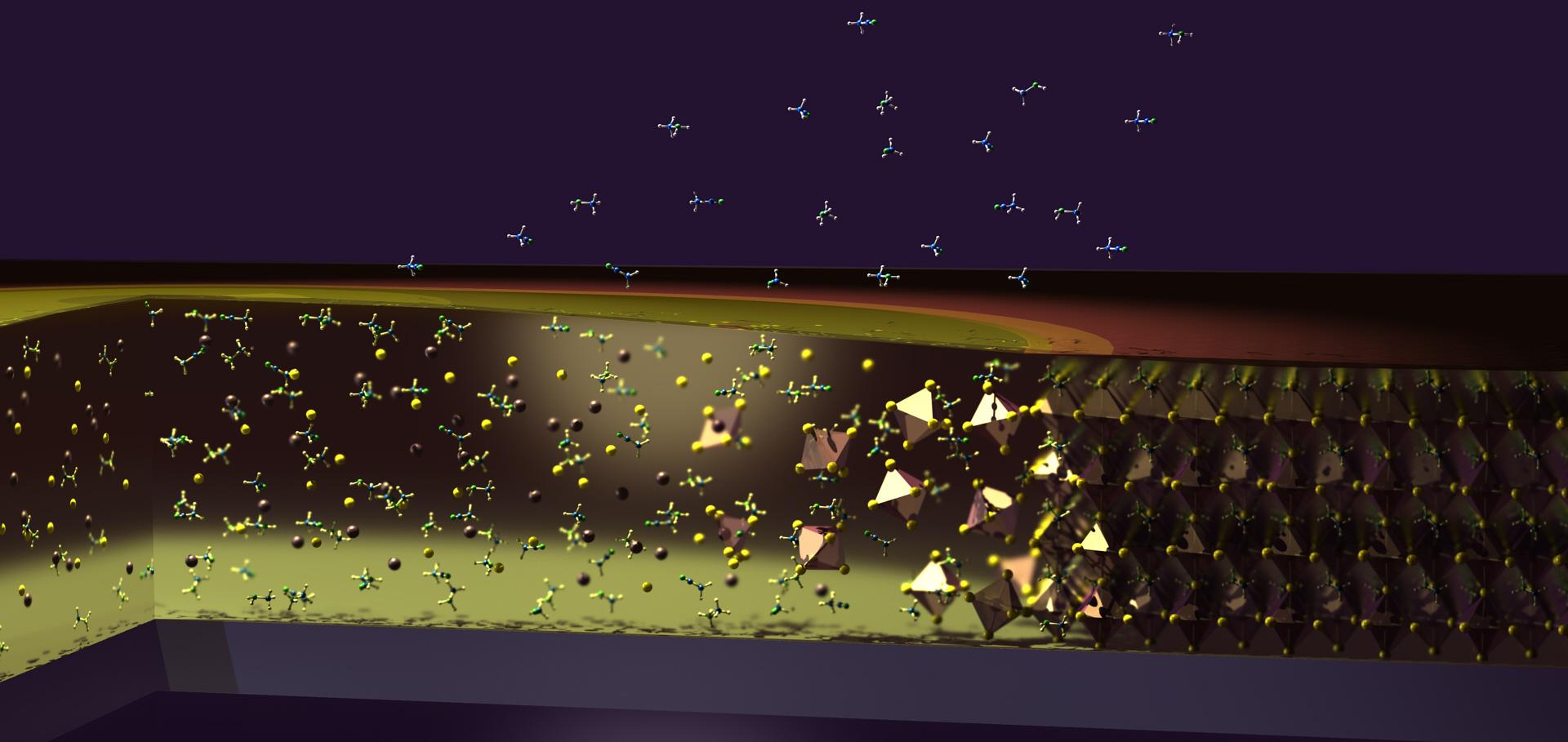(Invited) Polymer Wrapped Carbon Nanotubes As Highly Effective Hole Transporting Layers for New Perovskite and Quantum Dot Photovoltaic Devices
ECS Meeting Abstracts The Electrochemical Society MA2017-01:7 (2017) 586-586
Mechanism for rapid growth of organic-inorganic halide perovskite crystals
Nature Communications Nature Publishing Group 7 (2016) 13303
Abstract:
Optoelectronic devices based on hybrid halide perovskites have shown remarkable progress to high performance. However, despite their apparent success, there remain many open questions about their intrinsic properties. Single crystals are often seen as the ideal platform for understanding the limits of crystalline materials, and recent reports of rapid, high-temperature crystallization of single crystals should enable a variety of studies. Here we explore the mechanism of this crystallization and find that it is due to reversible changes in the solution where breaking up of colloids, and a change in the solvent strength, leads to supersaturation and subsequent crystallization. We use this knowledge to demonstrate a broader range of processing parameters and show that these can lead to improved crystal quality. Our findings are therefore of central importance to enable the continued advancement of perovskite optoelectronics and to the improved reproducibility through a better understanding of factors influencing and controlling crystallization.A low viscosity, low boiling point, clean solvent system for the rapid crystallisation of highly specular perovskite films
Energy and Environmental Science Royal Society of Chemistry 10:1 (2016) 145-152
Abstract:
Perovskite-based photovoltaics have, in recent years, become poised to revolutionise the solar industry. While there have been many approaches taken to the deposition of this material, one-step spin-coating remains the simplest and most widely used method in research laboratories. Although spin-coating is not recognised as the ideal manufacturing methodology, it represents a starting point from which more scalable deposition methods, such as slot-dye coating or ink-jet printing can be developed. Here, we introduce a new, low-boiling point, low viscosity solvent system that enables rapid, room temperature crystallisation of methylammonium lead triiodide perovskite films, without the use of strongly coordinating aprotic solvents. Through the use of this solvent, we produce dense, pinhole free films with uniform coverage, high specularity, and enhanced optoelectronic properties. We fabricate devices and achieve stabilised power conversion efficiencies of over 18% for films which have been annealed at 100 °C, and over 17% for films which have been dried under vacuum and have undergone no thermal processing. This deposition technique allows uniform coating on substrate areas of up to 125 cm2, showing tremendous promise for the fabrication of large area, high efficiency, solution processed devices, and represents a critical step towards industrial upscaling and large area printing of perovskite solar cells.Investigating the role of 4-tert butylpyridine in perovskite solar cells
Advanced Energy Materials Wiley 7:1 (2016) 1601079
Abstract:
The majority of hole‐transporting layers used in n‐i‐p perovskite solar cells contain 4‐tert butylpyridine (tBP). High power‐conversion efficiencies and, in particular, good steady‐state performance appears to be contingent on the inclusion of this additive. On the quest to improve the steady state efficiencies of the carbon nanotube‐based hole‐transporter system, this study has found that the presence of tBP results in an extraordinary improvement in the performance of these devices. By deconstructing a prototypical device and investigating the effect of tBP on each individual layer, the results of this study indicate that this performance enhancement must be due to a direct chemical interaction between tBP and the perovskite material. This study proposes that tBP serves to p‐dope the perovskite layer and investigates this theory with poling and work function measurements.Hydrophobic Organic Hole Transporters for Improved Moisture Resistance in Metal Halide Perovskite Solar Cells
ACS Applied Materials & Interfaces American Chemical Society (ACS) 8:9 (2016) 5981-5989


